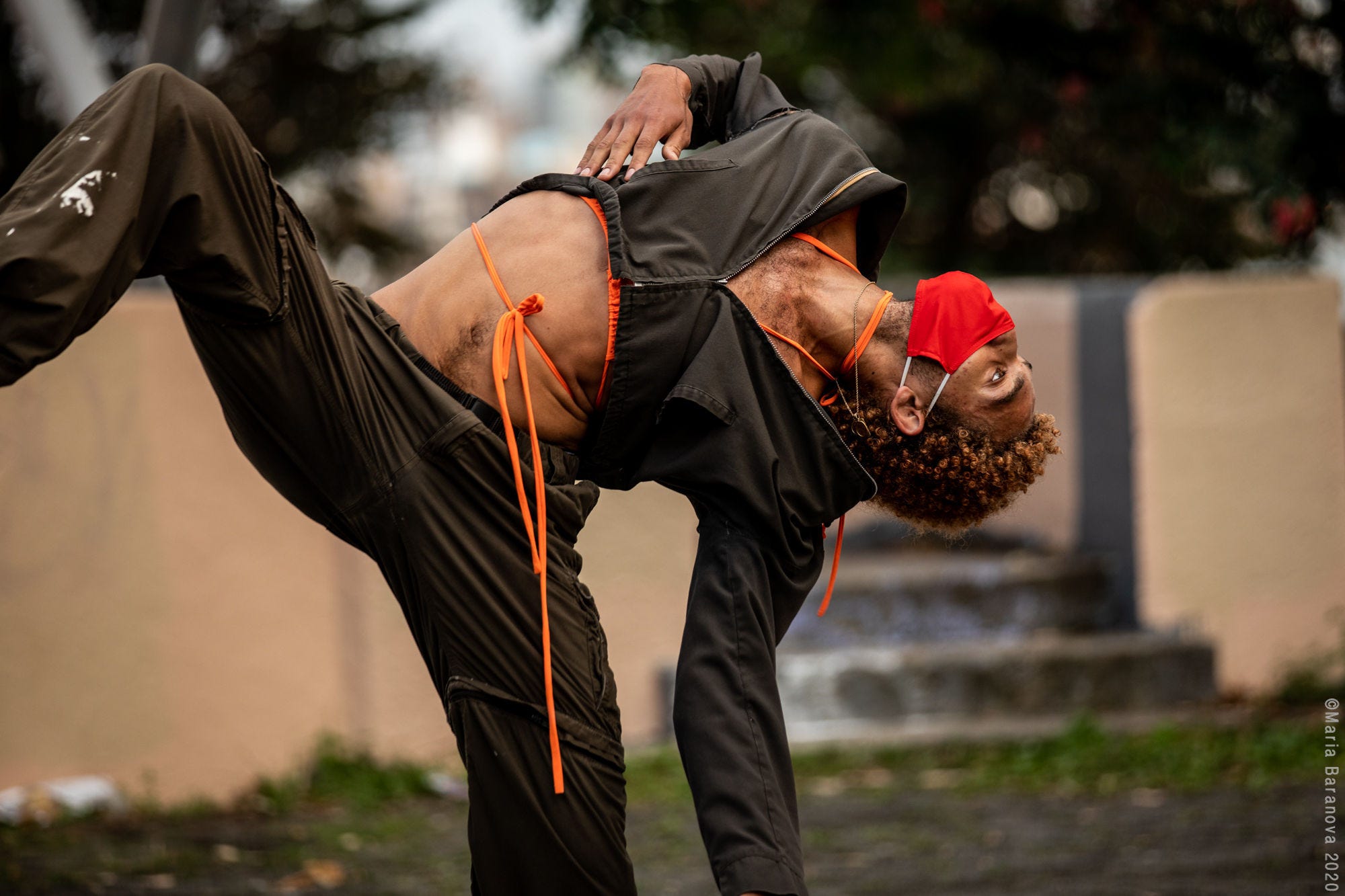Dance film demonstrates the act of physical and artistic survival in a harrowing year
Choreographer Netta Yerushalmy reflects on 'Distance Dance Demonstration,' an experimental film of an NYC performance screening via the Wexner Center

Every morning during the pandemic, New York City-based dancer and choreographer Netta Yerushalmy has walked along the East River for about an hour. The water has been a constant, grounding feature during the upheaval of the last year. The flowing river keeps doing its thing, regardless of viruses, vaccines, elections and insurrections.
“I'm usually not so touchy-feely, but man, this year I have survived because of water,” Yerushalmy said in a recent phone call. “It's been a saving force for me.”
Sometimes Yerushalmy would also go outside and dance in public spaces because she had nowhere else to dance. "It's a way of saying, ‘Well, sorry if I'm doing this weird, wiggly thing in your face,’” she said. “All of the private became public. Sometimes you walk in the park and everybody’s just performing what they need to perform.”
Yerushalmy took that idea to its logical extreme in September, when she choreographed a dance performance at the East River Park Amphitheater featuring Marc Crousillat, Stanley Gambucci, Nick Sciscione, Caitlin Scranton, Hsiao-Jou Tang, Babacar Top and Symara Johnson. Videographer Alex Romania filmed the performance, and director Jeremy Jacob added digital embellishments after the fact in coordination with Yerushalmy. The end result, “Distant Dance Demonstration,” is available to view online for free via the Wexner Center through April 13.
In the performance, the line between spectator and performer is blurred. At one point, a runner ascends the steps of the amphitheater and begins stretching before noticing the dancers around him. At other instances, the dancers themselves walk away and sit, at times looking like passersby in the park. "The joggers are running like they do every day, but suddenly the amphitheater is filled with people, and the people are sitting and looking at something on the stage,” said Yerushalmy, who wasn’t interested in choreographing a polished dance for the unorthodox event. “I just wanted to unleash a choreographic structure and some ideas inside this movement-saturated space, which is a park. There's so many interesting people doing so many interesting things all the time.”
Much of the project constituted something new for Yerushalmy and the dancers. It was a public park with broken glass and unexpected, noisy distractions. Dancers had to wear masks and maintain social distance. But the act of rehearsing — that part was familiar and comforting in a time when everyone seemed desperate for comfort and familiarity.
“People were vulnerable and wounded and confused. … People's relationships were falling apart. People's relationships to dance were falling apart. Some people didn't want to do any kind of body conditioning in their apartments,” she said. “They hadn't done dance in months, and they were unstable — not just on the gravel and broken glass, but also unstable internally in terms of their relationship to their bodies.”

Photographer Maria Baranova also documented the performance, and her beautiful photos helped kickstart the process of turning the video recording into something new and different. “Maria was up close, and I wanted to share these photos and these dancers, their faces and their energy,” said Yerushalmy, who worked with Jacobs to digitally insert the photos into the film. Jacobs also played with color and shapes in the film, using embellishments to mirror the geometrical arc of the amphitheater and to add bright pinks, greens and blues. At times, the coloring shifts to black and white.
“The shapes and colors, they move in time and they move in space,” she said. “It was trying to be more in a thoughtful place about where we are and what's happening. What are we doing? How are you feeling in this moment?”
Ambient music also fades in and out during the film, and even though the dancers couldn’t hear the soundtrack during the performance (“They were trying to listen to an internal rhythm,” she said), audience members could scan a QR code to hear the sounds.
The final product is something entirely different from what took place on that day in September; the film and the initial performance are two separate entities. “I wanted to find a way to share what we did, but with it being blatantly obvious that it's a different thing,” she said. “I'm surprised by how happy it makes me. It's poignant, it holds a moment in time, and it reveals, I think, some really beautiful things.”
At the time, Yerushalmy said she and the dancers didn’t know exactly what they were demonstrating. But months later, the performance has begun to feel like a defiant statement of existence, of human survival in a harrowing time.
“We were demonstrating that we were still there, that we were still dancing, that we still wanted to dance, that we were still those people that engage in practices that are not Zoom-able, and that the things that we offer the world are not essential,” she said. “We’re demonstrating that our bodies are these things that are meaty and fleshy and sweaty and vulnerable. And we're continuing to demonstrate why we need to be in each other's presence.”
At the end of the film, the dancers sit on the amphitheater stage, turn to the water and applaud.
